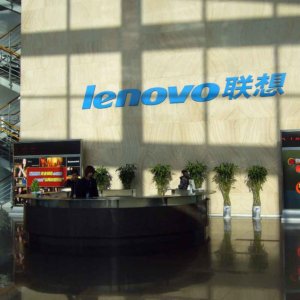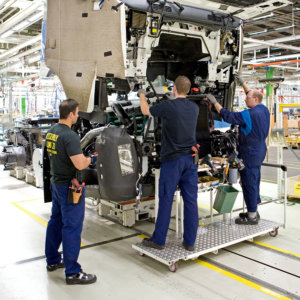Summer 2014
Volume 55, Issue # 4
Special Report: China’s Next Phase
From the Editor: Innovation and China
MARTHA E. MANGELSDORF
In today’s global economy, there aren’t many large companies that can afford to ignore China in their plans for growth. The Summer 2014 issue of MIT Sloan Management Review features a special report on China, with insights about how to learn from China, what the future may hold for the Chinese economy — and how to do business in China despite the challenges of protecting intellectual property there.
Features

The Dandelion Principle: Redesigning Work for the Innovation Economy
ROBERT D. AUSTIN AND THORKIL SONNE
Is Your Company Addicted to Value Extraction?
PAUL STREBEL AND SALVATORE CANTALE
Is your company focused on creating value — or on siphoning it off from others? Capturing value from other stakeholders by manipulating the competitive market process to the company’s advantage exposes a company to reputational or legal risks. It also can undermine corporate values. Value extraction is typically easier than developing a competitive advantage through ongoing value creation. Companies can get hooked on the practice, to the detriment of real value creation.
Intelligence
ADVERTISEMENT

From the Editor: Innovation and China
- OPINION & ANALYSIS
- READ TIME: 2 MIN
In today’s global economy, there aren’t many large companies that can afford to ignore China in their plans for growth. The Summer 2014 issue of MIT Sloan Management Reviewfeatures a special report on China, with insights about how to learn from China, what the future may hold for the Chinese economy — and how to do business in China despite the challenges of protecting intellectual property there.

Creating More Resilient Supply Chains
- RESEARCH HIGHLIGHT
- READ TIME: 10 MIN
Global supply chains bring increased risks of disruption from events such as natural disasters. But by understanding and planning for such risks, Cisco Systems improved its own supply chain resilience. Its five-step process: identify strategic priorities; map the vulnerabilities of supply chain design; integrate risk awareness into the product and value chain; monitor resiliency; and watch for events. John Chambers, Cisco chairman and CEO, calls this type of risk management “a key differentiator.”

Bridging the Sustainability Gap
- RESEARCH HIGHLIGHT
- READ TIME: 11 MIN
Most mainstream investors are unconvinced that sustainability leadership translates into profits and marketplace success. Despite rising importance on the corporate agenda, sustainability —as currently understood and measured — interests only a small niche of investors. The authors argue that a “back to basics” approach for measuring sustainability’s direct impact on revenue growth, productivity and risk would provide mainstream investors with the data that’s critical to their decisions.

Rejuvenating a Brand Through Social Media
- RESEARCH HIGHLIGHT
- READ TIME: 9 MIN
When Nestlé UK invited customers to vote for a new chocolate bar flavor, the company’s target customers participated in droves. By leveraging social media for the Kit Kat brand, the company was able to build positive word of mouth through consumers who became brand advocates; increase sales; and generate a higher return on investment. The process followed a four-step framework that any company can use to extract valuable information from the vast amount of data generated by social media.

Is Your Company Addicted to Value Extraction?
- OPINION & ANALYSIS
- READ TIME: 5 MIN
Is your company focused on creating value — or on siphoning it off from others? Capturing value from other stakeholders by manipulating the competitive market process to the company’s advantage exposes a company to reputational or legal risks. It also can undermine corporate values. Value extraction is typically easier than developing a competitive advantage through ongoing value creation. Companies can get hooked on the practice, to the detriment of real value creation.
ADVERTISEMENT

Revisiting Complexity in the Digital Age
- RESEARCH FEATURE
- READ TIME: 22 MIN
As businesses grow and diversify, they almost inevitably make their range of offerings more complex. Until now, managing that complexity usually involved a trade-off between creating value from complexity and benefiting from the efficiencies of simplicity. But smart use of today’s digital technologies can help companies finesse those trade-offs between costs and benefits. Digitization can help companies, for instance, increase product variety and integration while maintaining process simplicity.

When Customers Help Set Prices
- RESEARCH FEATURE
- READ TIME: 22 MIN
To many managers, the idea of involving customers in pricing decisions seems counterproductive. For most companies, pricing is a sensitive, private affair. But it may be time to reexamine those ideas. Letting customers have input on prices provides opportunities for customization and can promote greater customer engagement. Opening up customer participation also offers a way for companies to create a new sense of excitement.

Innovation Lessons From China
- RESEARCH FEATURE
- READ TIME: 19 MIN
China is becoming the best place to learn how to make ideas commercially viable, even as many multinational companies are growing increasingly wary of doing business there because of concerns about unfair competition and theft of intellectual property. Chinese companies excel at cost reduction, accelerated product development and networked production — and know how to assess what they can do and quickly find partners to fill the gaps.

Protecting Intellectual Property in China
- RESEARCH FEATURE
- READ TIME: 20 MIN
“By operating in China, overseas businesses expose their intellectual property to risk,” write Andreas Schotter (Ivey Business School at Western University) and Mary Teagarden (Thunderbird School of Global Management). “But deciding to stay away entails the even greater risk of missing opportunities to acquire knowledge that is critical for competitiveness across a wide range of global markets.” To protect their IP, companies need to control and manage their IP vulnerabilities proactively.

What’s Next for the Chinese Economy?
- RESEARCH FEATURE
- READ TIME: 15 MIN
After a period of remarkable growth, China faces substantial challenges. There is evidence that China is hitting the wall of diminishing returns with a growth model that relies heavily on exports and investments in fixed assets and infrastructure. It is harder to grow a country’s economy after the country has attained “middle-income status,” and the author argues that China needs both political and economic reforms to move to the next stages of its development.
ADVERTISEMENT

What to Expect From a Corporate Lean Program
- RESEARCH FEATURE
- READ TIME: 18 MIN
“Lean” programs help many manufacturers boost productivity. But misplaced expectations of how quickly these programs can improve performance can make their implementation difficult. Better understanding of the rates at which lean programs produce improvements would make implementation go more smoothly — and lead to more increases in productivity. Managers should set targets that are appropriate to specific plants and be careful not to derail progress by using initial gains to lay off workers.

What Businesses Can Learn From Sports Analytics
- RESEARCH HIGHLIGHT
- READ TIME: 10 MIN
In professional sports, some teams are becoming sophisticated in using data to measure team and player performance, sports business and health and injury prevention. Sports teams’ use of analytics has much to teach other managers about alignment, performance improvement and business ecosystems. For instance, teams are beginning to assess performance in context, seeing how teams do with or without a particular player. This “plus/minus” analysis could be a valuable technique for many businesses as well.

The Dandelion Principle: Redesigning Work for the Innovation Economy
- RESEARCH FEATURE
- READ TIME: 15 MIN
People who are “different,” either behaviorally or neurologically, can add significant value to companies. The authors, who studied the practices of innovative organizations and the experience of a Danish company working with people with autism, argue that companies can benefit from adjusting work conditions to embrace the talents of people who “think differently” or have “inspired peculiarities.” “Managing innovation is less about averages and more about understanding outliers,” write the authors.

Accelerated Innovation: The New Challenge From China
- RESEARCH FEATURE
- READ TIME: 23 MIN
Chinese companies are opening up a new front in global competition. It centers on what the authors call accelerated innovation — that is, reengineering research and development and innovation processes to make new product development dramatically faster and less costly. The new emphasis is unlikely to generate stunning technological breakthroughs, but it allows Chinese competitors to reduce the time it takes to bring innovative products and services to mainstream markets. It also represents a different way of deploying Chinese cost and volume advantages in global competition.














沒有留言:
張貼留言